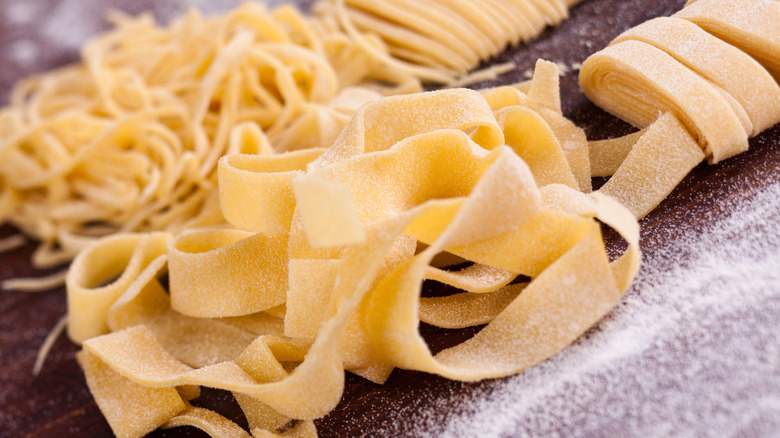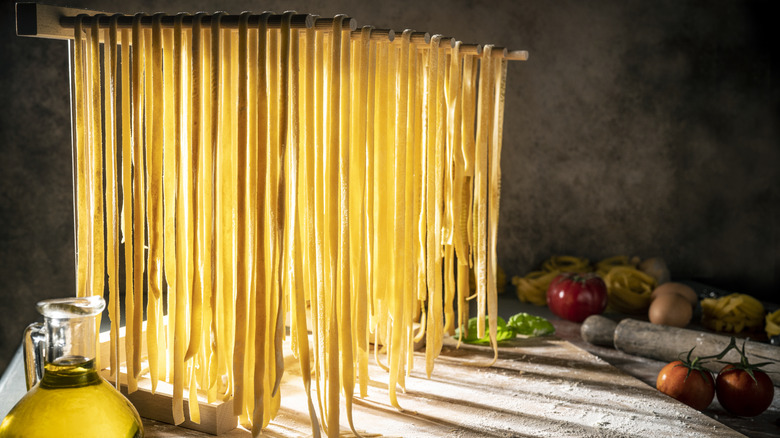Making Fresh Pasta With The Window Open Is A Major Mistake
While making fresh pasta is very simple once you get the hang of it, there are rules to follow in order to achieve the best results. You need to be very careful with the ratios of egg, water, and flour because it has an impact on the consistency of your dough. You also need to be very aware of your surroundings. For example, if there's an open window in your kitchen, it needs to be closed immediately.
The problem with leaving a window open when you're making fresh pasta is that it introduces an open-air draft into the room. Drafty spaces will dry out your dough far too quickly. This isn't so much a problem when you're in the act of making the dough, but when it's formed and resting you need to be extra careful. Even if you've draped some kitchen cloth over the dough, airflow can still sneak in, creating cracking and hard areas that are difficult to remedy.
The best thing to do when you've got your dough where you want it is to wrap it tightly in plastic wrap put it in the refrigerator and let it rest for up to an hour. This allows it to continue to hydrate and for the glutens to have a chance to relax. However, you will need to do some drying in order to make sure your pasta is easily workable.
How dry is too dry?
While you don't want your fresh pasta dough to be dry beyond repair, there is a certain amount of dehydration that needs to occur before you can cut and shape it. Remember, the dough has been rehydrating in the refrigerator while it's been resting. Removing your pasta dough from the plastic and allowing it to rest for 15 minutes on the counter in a dusting of flour will allow the pasta to harden up slightly. Using the pasta directly out of the fridge could actually be a recipe for disaster, as it could prove too soggy and sticky.
By allowing it a short drying period, it will be hard enough to cut, but still malleable enough to shape. After the pasta is shaped, however, you want to allow it another short period of drying. Leaving it for another 15 minutes in more flour will allow it to extract enough moisture for it to retain its shape and not clump together in the cooking water. If you're planning on storing your pasta, extend the drying time to half an hour or stretch it to a 12 or 24-hour window, just to allow all of the dusted flour to totally absorb any moisture from the egg.

